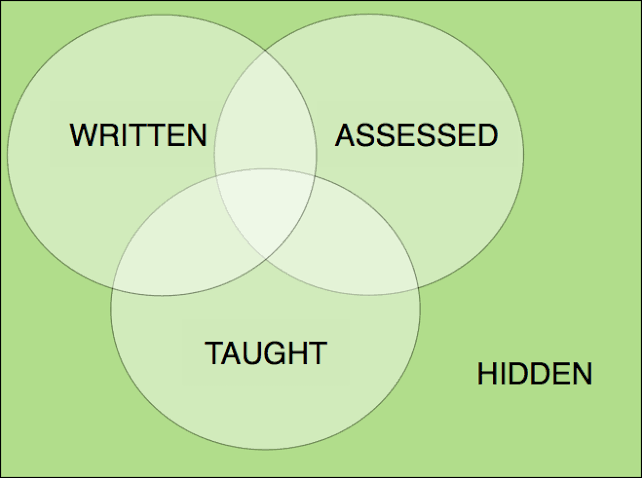Education plays a crucial role in shaping the minds and futures of individuals. While formal curriculum outlines the intended learning objectives, materials, and assessments, there is another dimension to education that often goes unnoticed—the null curriculum. The null curriculum represents the topics, ideas, and perspectives that are excluded or neglected in the educational system. By examining the null curriculum, we gain a deeper understanding of the implicit messages conveyed to students and the implications it has on their worldview. This article aims to explore the concept of the null curriculum, shed light on its significance, and provide examples of its presence in modern education.
 |
| The Hidden Curriculum: Exploring the Null Curriculum Examples |
Table of contents
What is the Null Curriculum?
The null curriculum refers to the knowledge and experiences that are not explicitly taught within an educational setting. While the formal curriculum outlines the content that is intended to be taught, the null curriculum encompasses the ideas, perspectives, and subjects that are left out, intentionally or unintentionally. It is the hidden curriculum—the unspoken lessons that shape students’ beliefs, values, and assumptions.
The Significance of the Null Curriculum
The null curriculum is significant because it influences students’ understanding of the world and their place in it. By excluding certain topics, perspectives, or experiences, the null curriculum sends a powerful message about what is considered important or unimportant. It has the potential to reinforce stereotypes, perpetuate inequalities, and limit students’ exposure to diverse ideas and voices.
Examples of Null Curriculum
Gender and Sexuality
Another example of the null curriculum is the limited or absence of education on gender and sexuality. Many traditional curricula fail to provide comprehensive instruction on the diverse range of gender identities and sexual orientations, leaving students without a thorough understanding of these important aspects of human diversity. This omission can contribute to a lack of awareness, empathy, and acceptance, perpetuating stereotypes and stigmatization of individuals based on their gender and sexual orientation. Inclusive and comprehensive education on gender and sexuality is essential for fostering a more inclusive and tolerant society.
Indigenous History and Culture
In various educational systems, the null curriculum often overlooks or provides limited representation of indigenous history and culture. By neglecting the rich and complex narratives of indigenous peoples, students are deprived of the opportunity to appreciate diverse cultural perspectives, fostering a narrow worldview.
Mental Health and Emotional Well-being
The null curriculum frequently neglects mental health and emotional well-being education, despite the increasing prevalence of mental health challenges among students. The absence of these topics can perpetuate stigma and hinder students’ ability to understand and manage their mental well-being effectively.
Media Literacy and Critical Thinking
In an era of information overload and rampant misinformation, the null curriculum often fails to address media literacy and critical thinking skills. Students are not adequately taught how to analyze and evaluate sources of information, leaving them vulnerable to manipulation and unable to navigate the complexities of the digital world.
Financial Literacy and Life Skills
The null curriculum often overlooks the importance of financial literacy and life skills. Students may graduate without fundamental knowledge about budgeting, taxes, and financial planning, leading to potential difficulties in managing personal finances and making informed financial decisions.
The Impact of the Null Curriculum
The impact of the null curriculum is profound. It perpetuates societal biases and inequalities, hinders students’ ability to engage critically with the world, and limits their understanding of diverse perspectives and experiences. Students may develop a skewed worldview that fails to recognize the complexity and interconnectedness of societal issues, leaving them ill-equipped to navigate an increasingly diverse and globalized world.
Addressing the Null Curriculum
To address the null curriculum, educators and policymakers must engage in critical reflection and intentional curriculum development. It is crucial to identify and challenge the biases and omissions within the educational system. Integrating marginalized perspectives, diverse cultural narratives, and critical topics into the formal curriculum is essential to providing a well-rounded education that prepares students for a pluralistic society.
Conclusion
The null curriculum represents the hidden messages and gaps within the educational system. By recognizing and addressing the null curriculum, we can create a more inclusive and comprehensive educational experience for students. Emphasizing marginalized perspectives, diverse narratives, and critical topics can help cultivate informed citizens capable of engaging with the complexities of the modern world.
Bibliography
- Apple, M. W. (1982). Education and power. Routledge.
- Au, W. (2011). Critical curriculum studies: Education, consciousness, and the politics of knowing. Routledge.
- Kumashiro, K. (2010). Seeing the invisible: Unpacking curriculum processes and contexts. Routledge.
- Sleeter, C. E. (2011). Confronting the marginalization of multicultural education. Routledge.
- Valenzuela, A. (1999). Subtractive schooling: US–Mexican youth and the politics of caring. SUNY Press.
